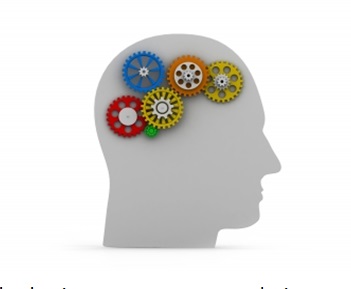A Coaching Power Tool created by Jennifer Querques
(Transformational Coaching, UNITED STATES)
This power tool should help clients gain a better understanding of where their decision-making sources are coming from (the head or the heart), and how to better trust in the ones that support them. We’ll take a look at the differences of “thinking” versus “feeling” and how they play out in decisions, as well as learn tools to help clients discover, develop, and trust their unique sources.
Intuition is a sense of knowing how to act spontaneously, without needing to know why. The why question leads to indecision, anxiety, caution and self-limitation. There are all responses which originate in fear-based emotions. Sylvia Clare, Trusting Your Intuition: Rediscover Your True Self to Achieve a Richer, More Rewarding Life
Thinking:
When a person is guided in their decisions by “thinking”, they are allowing their brain, or ego as some call it, to take control. When making a decision from the “thinking” space, it’s coming from your head, which can also be linked to the ego. Certain ideals, beliefs, and social standards about what individuals should do, be, or achieve in order to be successful, contribute to the cycle of making decisions from this head space. It can be confusing sometimes to make a decision from this space, because a decision can be made without much thought, or having a good answer for why. An answer may sound something like,
I going to do x-y-z because it’s just what you should do, right?!
The decision may be something that thought you wanted or must have, but after achieving it or following through, there is still a sense of unhappiness or uneasiness.
A person who uses thinking to guide their choices may be concerned with, and make decisions based on, what other people want, what would fit in the best way, or be concerning oneself with fears or society norms.

(I want you to notice the italic words in that last paragraph and we’ll come back to this later.)
Feeling:
A decision based on “feeling” comes from being in touch with what is going on inside the body as well as signs or signals from external sources, which generate an internal feeling one way or another. The source of information for decisions seem to flow naturally from an internal guidance system. It’s like you are guided or assisted in your decisions and direction by your intuition and feelings, or sometimes signals.

For example, I had a client that was clair-sentient, which means he can feel spirits by way of “tingles on his body”. He has an agreement with his spirit sources to only affirm a positive response. So this will play out like this… If he makes a decision to start a new job and it’s the right one for him, he’ll get tingles over his arms.
Each person has the ability to recognize how something feels inside their body, but they need to harness that power. When taking into account various options, the client can “try on” or imagine each side, and then feel what it’s bringing up inside them to see if there’s a distinction between what feels right for them internally. The feeling ability also spans out to seeing and recognizing signs that have been shown to them to point them in the direction that’s right for them. Being present and mindful, are the keys to being able to feel what’s going on.
One of the hardest things to do in following a feeling, is to trust it. I know this from personal experience. I’m an extremely intuitive person, and didn’t trust my internal guidance for the majority of my life. I started to notice that I would have a “feeling,” but ended up following my “thinking” instead, and the outcome wasn’t what was best for me. In order to stop my own frustrations, I decided to start keeping track. This may also be helpful for clients who are not sure of whether they can trust their internal guidance system. Taking notes or keeping track of internal feelings, sensations, external signs that stand out or trigger an internal reaction, and then comparing with the outcome (as far as they know).
Being able to look back at proof of one thing over another, will allow the client to hone their intuition. Each person is different, and has different ways of guidance, so it’s important for them to understand their own system and trust in it. This also means that the client needs to start incorporating mindfulness into their daily life. Without a sense of mindfulness, being quiet to hear or sense, as well as being present, it’s extremely difficult to capture what’s happening inside our bodies as a “feeling”. Sometimes the nuances between feeling and thinking are very slight and in order to differentiate, one must be present and aware.
(Now, going back to the key words I pointed out before… When making a decision and there’s so much thinking involved that you feel overwhelmed or exhausted is really telling.)